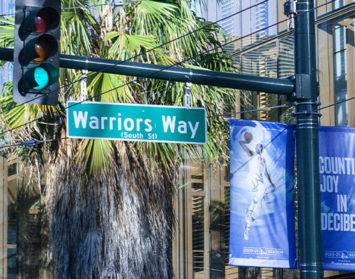In just under three weeks, Santa’s sleigh will course its way through high- and mid-rise office buildings throughout the region just after midnight, being especially careful not to bump into the increasing numbers of “For Lease” signs pleading for attention. As magical as his sleigh might be, there’s not nearly enough room to pack in the millions of square feet of vacant office space that’s available these days to office tenants.
Indeed, it’s the most wonderful time of all for those wanting to lease office space — especially those who’ve been smart enough to ignore the bluster of landlords, property managers and their broker elves who would say otherwise.
Frankly, it’s about time. Those of us in the business of representing office tenants have been shouting the good news from the region’s high- and mid-rise rooftops for the past many months. And fortunately, our proclamations are now being heeded by growing numbers of tenants and astute landlords who’ve figured it out.
The numbers tell the tale. Available office space in the metropolitan areas now sits unoccupied on the market for an average of 14 months and with a 17.4 percent availability rate, there’s plenty of space from which to choose. Landlords are also competing with tenants who are trying to sublease 4.6 million square feet of space.
It’s not that different in the suburban markets. Every submarket has a year’s worth of upward-trending space availability rates; the only notable exception being Carmel Valley, or Del Mar Heights.
Landlords will continue to suffer at the high end for new, Class-A office space countywide, particularly in the case of new buildings in Carlsbad, where the asking rents are $2.80 to $2.90 per square foot, and on the I-15 corridor, where rents are being asked in the $3.50 and $4.00 range.
Back to downtown San Diego, where the market is even softer. Class-A vacancies now compose 19.25 percent of the inventory, while vacancies hover at 15.45 percent for Class-B properties. Several owners have as much as 30 percent of their buildings vacant. Meanwhile, property tax increases and escalating parking fees are pushing tenants to find less expensive and more creative space outside the central business district.
The residential real estate slowdown has emptied more than 2 million square feet of office space due to cutbacks by mortgage, escrow, title and development firms. However, there are solid signs of expansion on the part of not-for-profit organizations, technology and life-sciences companies, including AVID, Voices for Children, The Alzheimer’s Association, Entropic, The Active Network, Provide Commerce, Artes, Phenomix, Geoptix and Alphatec Spine to name but a few of the companies we are working with.
Those are hardly indicative of the space glut in the San Diego regional office market. Landlords will need to become much more aggressive and creative over the next two to three years it will take to rebalance the supply and demand equilibrium. Meanwhile, here are some suggestions to hasten that outcome.
First, landlords need to start treating tenants as the golden geese they are. Gone are the “take-it-or-leave-it” days when landlords ruled the roost. Tenants are becoming better informed about their myriad options.
Next, landlords should be formally protesting their too-high property tax bills to the county, petitioning the powers that be to adjust the taxes downward to reflect market conditions and to negate the absurd prices they paid for their buildings. My initial estimate is that commercial properties are worth 20 percent less today than a year ago. Adjusting the property taxes accordingly would result in real money savings in operating expenses and pass-throughs being paid by tenants.
Quit looking for ways to gouge tenants such as concocting new ways to measure square footage. One of the city’s largest landlords has employed a “space management consultant” to measure each suite being leased. Somehow, every suite measured is now “larger” than it was when it was measured by more conventional criteria. This landlord was literally looking for ways to squeeze the last drop of blood from his tenants.
Last, at least for now, landlords need to be more transparent. How about being more open with the audit language and terms in leasehold documents? How about making the books where expenses are recorded readily available for tenant inspection? It continues to amaze me the degree to which landlords slither into the gray zone when defining operating expenses.
Lord only knows what would happen if more landlords adopted the Nordstrom attitude about customer service. Imagine, tenants wanting to lease in a building not only because of its location but the extraordinary level of service and care on the part of the landlord.
What a novel concept. What better time to take such tact than the coming new year?
Jason Hughes is founder of Hughes Marino, an award-winning commercial real estate company with offices across the nation. A pioneer in the field of tenant representation, Jason has exclusively represented tenants and buyers for more than 30 years. Contact Jason at 1-844-662-6635 or jason@hughesmarino.com to learn more.









